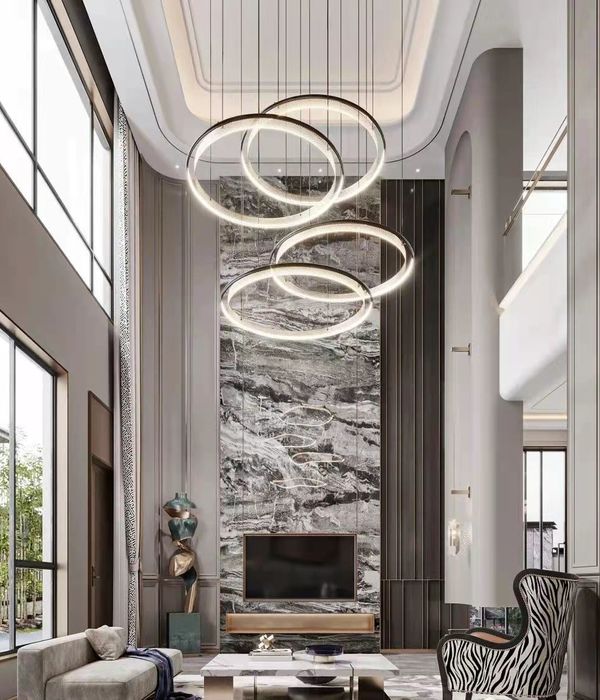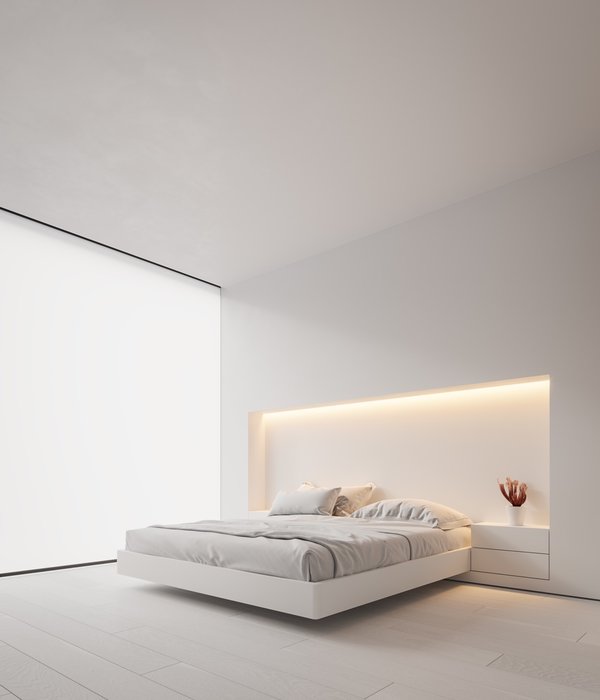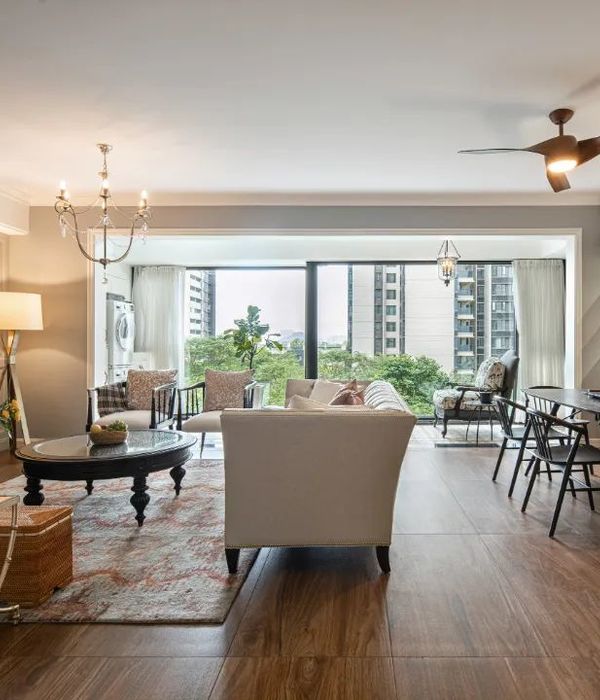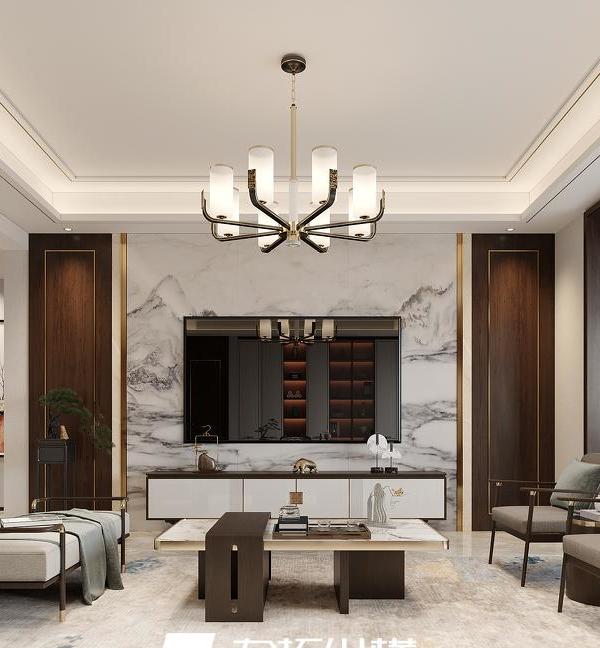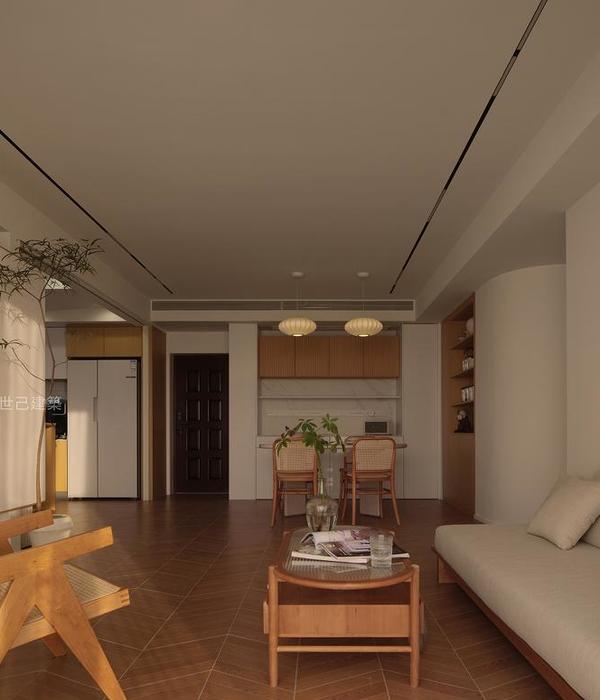The Hague housing
设计方:Atelier Kempe Thill
位置:荷兰 海牙
分类:居住建筑
内容:实景照片
图片来源:Ulrich Schwarz
图片:32张
摄影师:Ulrich Schwarz
这栋住宅楼位于荷兰海牙, 占地9,132 平方米,是由Atelier Kempe Thill事务所设计建造的,地处第十街区。住宅楼共有88间公寓和27个排屋,由荷兰最大的建筑公司Vestia负责建造。这附近有很多住宅楼,建于上世纪60年代,建筑师本想保留两栋三层的公寓楼,但
城市规划
部门和建筑商经过协商,基于房地产公司进行的可行性研究,最终决定全面拆除旧楼,建造新的公寓。如果进行公寓翻新,可能会超出之前的最大预算。公寓附近建有庭院,种上了很多植物,观赏性强,这里环境优美,绿化很好。这里要从头开始建造,从裸露的沙地开始,为住户提供崭新的居住环境。建成后,居住区的面积是之前的两倍,住户的数量没有明显增加。这里靠近主街道,通向海牙市中心,交通便利。排屋建在公寓的后面,比较清静。
公寓的一层为停车场和储物区,由于地下水位较高,不适宜建在地下。停车场上面有绿色的顶棚,有宽敞的露台,可作为孩子们玩耍的地方。公寓的视野开阔,通风流畅,可以尽情欣赏周围的美景。一般来说,这里的土耳其和摩洛哥的第二代、第三代移民住在排屋,而第一代人更愿意住公寓,退休的荷兰居民会住在上面的楼层。楼房的阳台比较长,空间宽敞,外部采用预制的混凝土板进行建造。楼内有电梯和楼梯,整栋楼的设计具有现代主义风格。
部分的退休居民,由于年事已高,行动不便,会住在一层和二层,坐轮椅的话,比较方便进出。这里标准公寓的大小为九十五平方米,有两间卧室,属于荷兰政府的补贴住房项目。公寓内的起居室采用玻璃外观,采光效果好,装有2.5米宽的滑动窗和滑动门,视野比较开阔。这栋住宅楼的外观为金色,类似香槟色,比较美观,突显了金属结构元素,也为城市增添了活力。外部有铝制窗框和波纹金属板,做工比较精细,富有层次感。该设计还可以大大降低超过28个分贝的噪音,保障居住环境的清静,同时起到防风、防雨的作用。该项目很好地控制了建筑成本,还实现了技术创新,建筑品质较高,属于大型的住房项目。住宅楼有良好的热回收、机械通风、遮阳和隔音效果,还有先进的地热系统,比较节能环保。
译者: Odette
In 2006, Atelier Kempe Thill is commissioned to design Block 10 in the Moerwijk neighborhood of The Hague with eighty-eight apartments and twenty-seven terraced houses as the result of a negotiation procedure by Vestia, the largest building corporation in the Netherlands.Moerwijk is a typical restructuring area with residential buildings from the nineteen-sixties, as also exist in many large cities in the Netherlands. Also here, the city and housing corporations agreed on the comprehensive demolition of the entire area rather than renovation of the existing buildings.
Commissioned to create the new urban development plan required was the firm KCAP, whose project is fundamentally based on the existing street and block structure. What is distinguishing here—as in the majority of comparable planning situations—is the fact that it is not possible to change the street grid due to the new necessary infrastructure, as well as the fact that such a large-scale operation would have to be realized in smaller steps of 150 to 250 residences. For this reason, the new development adheres nearly exactly to the old building lots, but with a substantial difference: the depth of the buildings has been increased from nine meters to approximately thirteen, and a new mix of apartments and terraced houses is created in place of the original development, consisting exclusively of apartments. The apartments thus stand on the edge of the area and form an “urban border,” while the terraced houses are located in the more intimate interior of the grid.
KCAP originally envisioned retaining two of the three-story apartment blocks in the heart of the area as a witness to the original urban development plan of Willem Marinus Dudok. Based upon feasibility studies conducted by the housing corporation, these last two structures were, however, also approved for demolition in the end. Suitable renovation with the combining of apartments as well as the corresponding acoustics and energy efficiency would have exceeded the maximum budget. The ground plan and the building structure were also not appropriate for the planned changes.
The impressive planting of the courtyards and the carefully composed trees on the streets (magnificently blooming ornamental species) were also sacrificed to the bulldozer, so that after fifty years everything was virtually started again from scratch on the basis of a consistent tabula rasa—and indeed with the fascination for the virgin, bare sand area that is so typical for the Netherlands, and in which one is able to dream up new buildings like a new beginning of life.
What is moreover remarkable is the economic logic of such a large-scale operation, which ultimately makes the entire current production of residential buildings in the Netherlands seem like an increase in luxury. Such an operation is only then feasible when approximately two times the amount of living space is built up once again. Finally, however, only the same number of residences as before will be built despite a doubling of the area. In addition, approximately only half the number of people will live in these new apartments compared to fifty years ago.
The new design for Block 10 is conceived by KCAP as meaning an apartment development along Erasmusweg, which is the main street leading to downtown The Hague, and also an area of terraced-house development situated behind the apartments. The buildings along Erasmusweg serve as a noise barrier for the surrounding area to the back while also functioning as a city boundary.
According to Atelier Kempe Thill’s analysis regarding both the required parking space and storage space for the apartments, which should also be situated on the ground floor, it becomes clear that it would be necessary to assume that the space between the two buildings would be filled completely with parking space. Building an underground parking garage would be uneconomical due to the high water table. As an alternative (and similar to the residential building project in Amsterdam-Osdorp), Atelier Kempe Thill proposes covering the parking space with a green roof deck, which it envisiones as a terrace for neighboring apartments as well as a communal area with opportunities for children to be able to play. Generous openings in the deck are planned in order to make it possible to ventilate the garage naturally. Building such a large residential complex from scratch thus offers the chance to create a generous, collective inner courtyard.
The discussions regarding this idea that Atelier Kempe Thill conducts with the housing corporation are worth noting. It quickly becomes clear in the meetings with Vestia that the combination of terraced houses with apartments would lead to social differences between the residents, which would make any shared use of the courtyard inconceivable. Vestia is of the opinion that second- and third-generation Turkish and Moroccan immigrants who have achieved prosperity would live in the terraced houses, that large, first generation families from Turkey and Morocco would probably live in the subsidized maisonette apartments, and that retired Dutch citizens would prefer the upper floors. According to this assessment, none of the target groups would be interested in sharing a single courtyard with the others. The design desired is thus one that guaranteed a generous coherence optically while clearly separating the residents of the two sections spatially, since they would otherwise—according to the conjecture—only disturb each other.
Residential housing development in the Netherlands in the nineteen-sixties and early seventies, for instance the well-known Bijlmermeer in Amsterdam, is mostly characterized by long, anonymous balconies for accessing the individual residences. This form of access is by far the most economical since the passageway in the form of a prefabricated slab of concrete need only be suspended on the exterior of the building structure without actually being part of the isolated building structure.
Due to the anonymity of an access balcony and the fact that the residents are completely exposed to the weather before reaching the elevator or stairway, the access balcony is—especially when it is quite long—one of the main criticisms expressed with respect to the residential building architecture of late modernism. Atelier Kempe Thill begins its work on the design of the new apartment building with this awareness and proposed various two-story apartment typologies with other forms of access. The housing corporation, however, come to the conclusion that only one-story apartments are desired.
The apartment size for the standard apartments desired by the housing corporation equates to ninety-five square meters with two bedrooms. The dimension between construction axes that allows the apartments and the parking garage to be coordinated with each other consists of 7.2 meters. Almost all interior dimensions of the rooms, up to the positions of sinks and the like, are precisely defined by the Woonkeur certification system, which generally applies to subsidized housing construction in the Netherlands. Within this basic plan, only two possible apartment layouts arise, quasi in autopilot: first, the doorzonwoning with the living room traversing the building with one bedroom on each façade. The second option is the panoramawoning, in which the living room completely takes up one side while the other side is occupied by the two bedrooms. Here, Vestia decides on the panorama variant, which provides the building with a generous living room and a view of the park-like Erasmusweg with its stream.
This constellation made it possible to design a glass façade for all of the living rooms that spans the complete height of the floor with 4.5-meter-wide fixed glazing and a 2.5-meter-wide sliding window. The corner apartments have been given glazing in the living room, which extends around the corner. All of the glasswork extends somewhat over the ceilings of the floors at the top, which means that curtains can be hung in the interstice that is created. The window connections are minimized at the bottom as well as on the sides in order to achieve a comprehensive visual opening of the interior toward the outside. The bedrooms facing the side where the access balcony is located can also be provided with generous windows despite the restricted budgetary framework.
The outer appearance of the building complex is defined by the subtle, golden “champagne” hue of all metal construction elements in the external façade, which also strives to form a connection with the atmosphere of other residential areas in The Hague. The aluminum window frames and extruded cover plates as well as the fine-ribbed corrugated sheet metal are executed in a subtle gold color. The goal in doing so is to lend the building complex a discrete touch of nobility and to consciously break the stigma that social housing construction not only has to be cheap but also has to look cheap. This effect is particularly important on the upper façade, which due to the limited financial framework only allows for a few windows and is thus rather closed.
On the two main façades facing Erasmusweg and Wildenborghstraat respectively, the glazing dominates the façade. This gives the complex a distinctly public character toward the outside, while the bedrooms characterize the private character toward the inside. The large window glazing has a harmonious relationship to the overall size of the building, which means that its overall scale can easily be comprehended by viewers.The detailing of the two façades represents a further development and refining of the projects in Amsterdam-Osdorp and Zwolle. This situation is particularly noteworthy since it was possible to achieve a very large reduction in sound comprising more than twenty-eight decibels as a result of the façade along Erasmusweg, a situation that reflects heightened requirements for all the profiles, connections, and the glass.
The dimensions of the glazing are even larger here than in the previous projects and the coverings between the window frames even narrower—with the goal of making the panes and thus the building as a whole appear even more generous. The coverings here are no longer flat but instead consist of extruded aluminum profiles fabricated especially for the project in order to create a tauter image in every detail. And to give the building even more lightness, the panes of the corner windows have no corner profile and are only glued.The maisonette apartments can be accessed from the street by means of sliding doors. The mailboxes are executed in their glazing as integrated sound-insulated flaps.
It was possible to address Vestia’s concerns regarding the ease of using the lifting/sliding doors in the living rooms, whose panel weight exceeds 250 kilograms, using a model with a scale of 1:1. With this model, both the impermeability to wind and rain and the ease of operation for older individuals is tested by three potential residents.In summary, it is possible to say with respect to the façade that within the very limited cost framework, the deviations from customary standards were only possible as a result of a consistent, Fordist manner of design with as few deviations as possible. This is based on the belief that, by concentrating on just a few details and realizing them critically with respect to all technical questions, it is possible to achieve not only convincing results but also technical innovation as well.
For mass housing projects in the Netherlands, it is by no means possible to confirm any purported economic equivalence between a “mass-customization strategy” with many individual adaptations and “Fordist consistency.” With the strategy of serial repetition, it is also much easier to address the increased risk and the reduced leeway in design that is connected with it, above all in the case of such large projects, and to counter clients’ greater aversion to risk with persuasive arguments.The Block 10 complex moreover has a future-oriented energy concept: in addition to various standards, such as heat recovery, mechanical ventilation, and well-insulated façades with sun-protection coating, which are customary for Atelier Kempe Thill, all of the heating energy is obtained by means of a geothermal system.
荷兰海牙住宅外观图
荷兰海牙住宅外部图
荷兰海牙住宅
荷兰海牙
住宅平面图
荷兰海牙住宅图解
荷兰海牙住宅大样剖面图
荷兰海牙住宅平面图
荷兰海牙住宅正面图
荷兰海牙住宅截面图
{{item.text_origin}}


